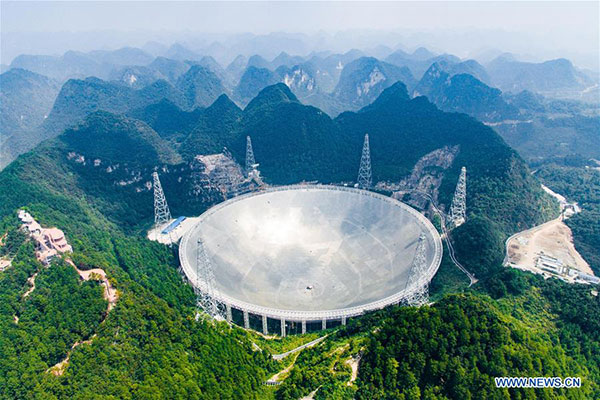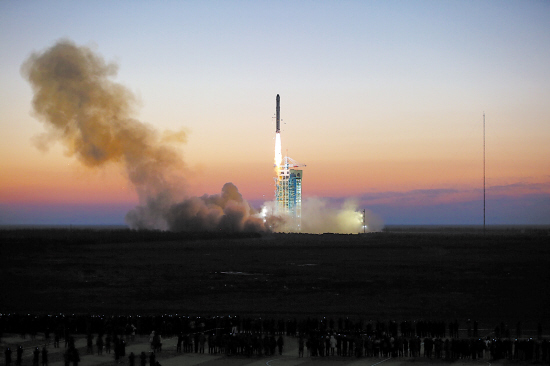Chinese big projects stunning the world
- By Zhang Rui
 0 Comment(s)
0 Comment(s) Print
Print E-mail China.org.cn, July 20, 2017
E-mail China.org.cn, July 20, 2017
In the past five years, China has developed a series of major innovative projects attracting world attention, including space satellites, large passenger jets, high-speed train network, aircraft carriers, bridges and much more. These ambitious programs ensure China will have a bright future.
BeiDou navigation system
|
A model of the BeiDou Satellite Navigation system exhibited in Zhuhai. [File photo/Xinhua] |
China will have its global GPS network based on the BeiDou Navigation Satellite System (BDS). Construction of the global network for the self-developed satellite navigation system will start during the remaining months of 2017 and will begin serving global customers upon completion in 2020.
C919 jet
|
The C919 passenger jet was unveiled as it was rolled out from the final assembly line in Shanghai on Nov 2, 2015. [China Daily] |
The C919 is a narrow-bodied twinjet airliner developed by Chinese aerospace manufacturer COMAC. The program was launched in 2008 and the plane first flew in May 2017. The self-developed aircraft, with completely independent intellectual property rights and 102 key technical breakthroughs, enabled China to break foreign manufacturers' monopoly in the big plane market.
"Heavenly Eye" telescope
|
Photo taken on Sept 24, 2016 shows the 500-meter Aperture Spherical Telescope (FAST) in Pingtang county, Southwest China's Guizhou Province. [Photo/Xinhua] |
The Five-hundred-meter Aperture Spherical Radio Telescope (FAST), nicknamed Tianyan ("Heavenly Eye"), is a major science project. It is a radio telescope located in a natural basin in Pingtang County of Guizhou Province in southwest China. It surpasses the existing telescopes of foreign countries in key areas, comprising a fixed 500m-diameter dish constructed in a natural depression in the landscape. It is the world's largest filled-aperture radio telescope, which will open people's eyes to the magnificent scenes of the universe.
Dark-matter satellite
|
Carrier Long March 2-D rocket blasts off at the Jiuquan Satellite Launch Center in Gansu Province, Dec 17, 2015, sending into space the country's first Dark Matter Particle Explorer Satellite.[Photo/Xinhua] |
The Dark Matter Particle Explorer (DAMPE) satellite "Wukong", which has been given this moniker after the Monkey King from the Chinese classic fantasy fiction "Journey to the West," will use its relatively large detection area to observe high volumes of cosmic rays, as well as establishing their source. It will survey the sky with sensitivity much greater than existing detectors.










Go to Forum >>0 Comment(s)